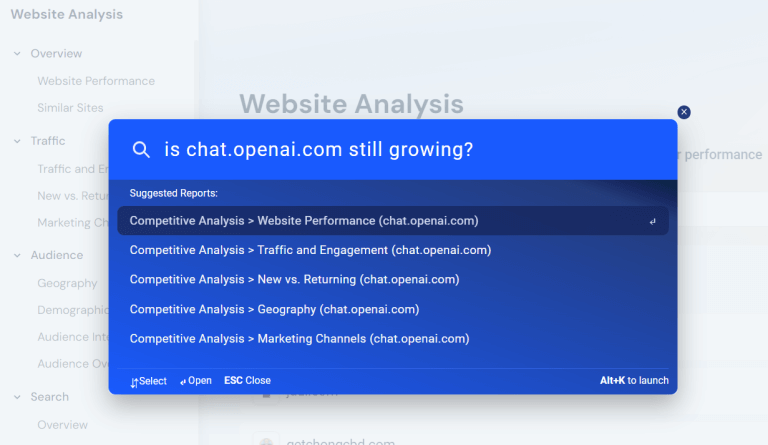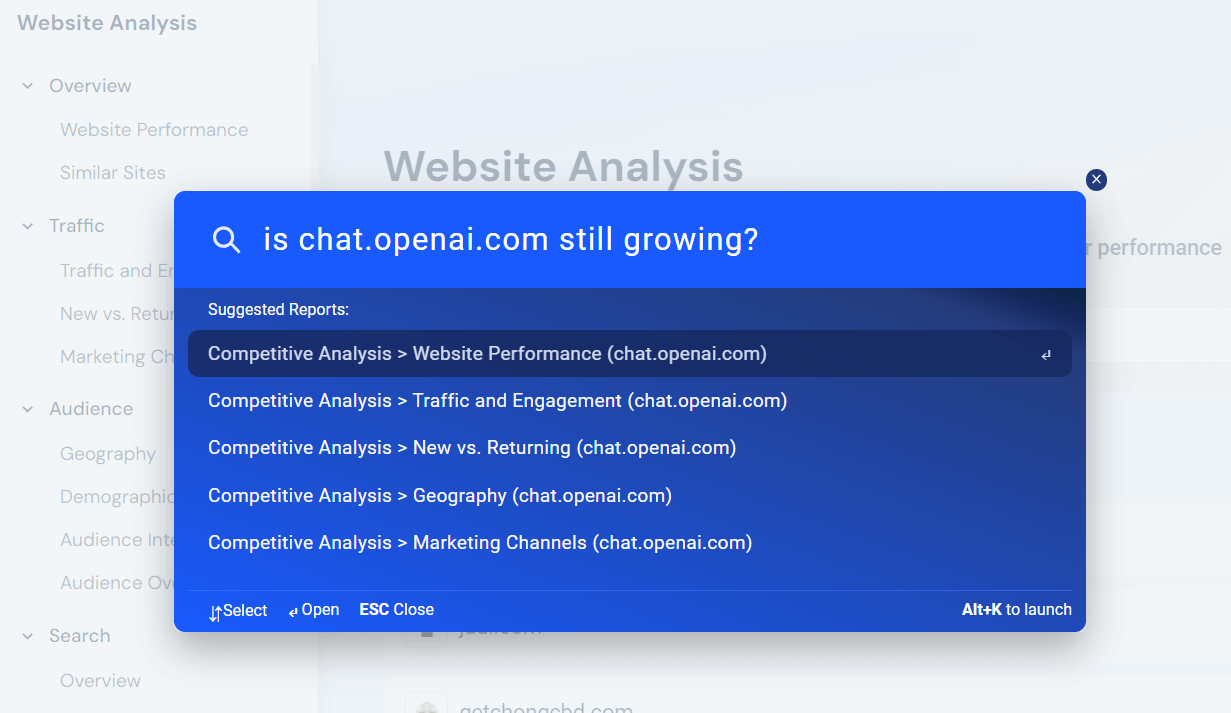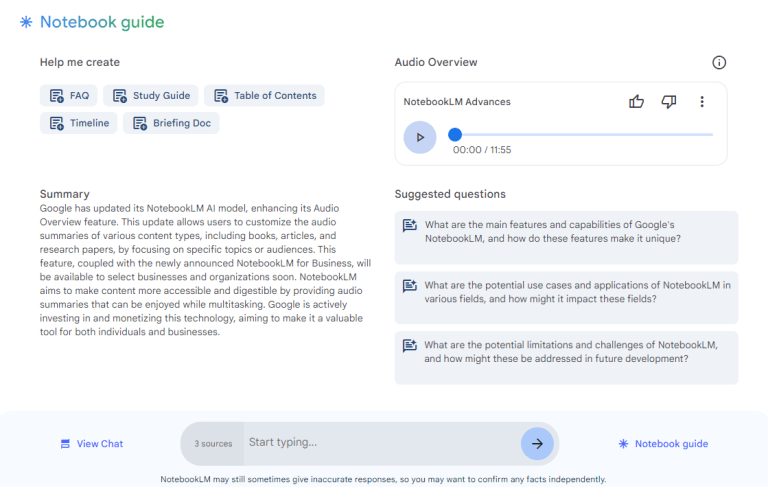What We Learned by Leveraging ChatGPT for Digital Innovation

No technology or business leader could fail to be astonished by the growth ChatGPT experienced in the first few months after its release in November 2022. The ChatGPT website topped 1 billion visits by February and was up to 1.8 billion as of May, surpassing well-known sites like Bing in global traffic.
Not bad for a website OpenAI originally released as a technology demo, not necessarily anticipating that it was about to become one of the most-trafficked websites in the world.
As the leader of a team of technologists who model digital traffic and engagement metrics, I was impressed by the numbers – but also the potential for reinventing our own products and services with similar technologies. It didn’t take much for me to encourage our engineers to begin experimenting – I don’t think I could have held them back if I tried – and it wasn’t long before they had a demo that wowed our company leaders.
Yesterday, we announced the beta of SimilarAsk, which grew out of an R&D hackathon where the engineers showed off the possibilities.
Here’s the original hackathon demo video (a more polished marketing department-approved version of what we’re actually announcing is here).
The hackathon proof of concept
The hackathon demo showed how we can deliver more value to our customers by speeding time to insight, providing access to what are effectively new platform features, and using AI analytics to put query results in context. Powered by OpenAI APIs, the hackathon demo chatbot took user prompts and transformed them into the functions and database queries our platform understands. The productized version we’re launching now can work with multiple AI models, not just OpenAI’s.
The advantage of the chatbot is that it delivers answers that, in some cases, otherwise would have required visiting multiple screens, mashing up the results in a spreadsheet, and asking an analyst or consultant to help with the interpretation of the results.

An example of using SimilarAsk BETA 1
While SimilarAsk is still a “concept car,” not a fully baked product, customers who have taken it for a drive are as excited as we are. Particularly for new users of our platform, this can make the difference between getting an answer instantly and not being able to find it at all.
The opportunity we see is not dissimilar to the reason many search technology experts believe generative AI technologies like ChatGPT and Google Bard could completely rewrite the rules of their industry.
A big part of what captured the public’s imagination was the experience of being able to chat with an AI bot and get back concise answers distilled from web content – as opposed to the usual search experience of clicking through multiple websites and articles to find the one that best answers your intended question. People came away with the impression that the bot “understood” what they wanted in a way that a traditional search engine does not.
If you’ve been paying attention to the debate over the value of generative AI, you know that these chatbots do not necessarily “understand” anything. They play an elaborate probabilistic guessing game of determining what word ought to come next in the answer they’re spitting out, stringing together one word at a time to come up with answers that, most of the time, make sense.
Those answers come from huge volumes of web content they’ve digested. If you ask how to solve a particular programming problem, what you get back is a synthesis of answers to many similar questions drawn from developer blogs and Stack Overflow forums.
The value of focus for an AI assistant
Unlike mass-market AI chatbots like ChatGPT which are sometimes known to “make things up” when they don’t have sufficient information, SimilarAsk has the advantage of pulling data from a known universe of existing dashboards and databases.
A chatbot is a great addition to our current user interface, but not necessarily a replacement for it. Similarweb power users will likely continue to use our platform’s menu-driven user interface for queries they run on a regular basis. Where a chatbot would provide the most value to them is when they want to ask a novel question that our product designers may not have anticipated. In other words, the chatbot can write a database query and obtain results that wouldn’t be accessible from any screen previously discoverable within the platform. We think it should be possible to create a custom visualization of those results, too. That’s what we mean by speeding “time to feature” – rather than asking our developers to create a product feature for them, they can have the chatbot program it for them in an instant. Effectively, our platform would gain the ability to add new features on the fly.
So far, I’ve covered “time to insight” and “time to feature” as advantages of this approach. The third, which is perhaps even more novel, is using AI analytics to help explain the data. In other words, instead of asking “How much did this website’s traffic grow?” we could ask, “How much did this website’s traffic grow and why?” Or we could ask, “What were the biggest US news events of January 2021?” and have the bot not only derive that ranking from the web data but put it in context.
Here, we start reaching beyond training the chatbot on the data in our own platform to letting it incorporate knowledge drawn from throughout the web, whether in the realm of digital marketing or news analysis and politics. Taking full advantage of the technology will require careful design and consideration of the risks to ensure the information we provide is useful and factual. The reason to tackle it anyway is that it opens up the possibility of providing small businesses with a depth of analysis previously only available to big companies with the budget to hire teams of analysts or consultants.
An opportunity too big to ignore
Getting the details right will be hard, but my message to any business or technology leader is that the opportunity is too big to ignore. Any sizeable enterprise ought to be able to find dozens of potential uses of generative AI, and the real challenge will be narrowing them down to those that are practical and provide the richest value to customers. Don’t waste the chance to find out what’s possible.
Wondering what Similarweb can do for your business?
Give it a try or talk to our insights team — don’t worry, it’s free!






